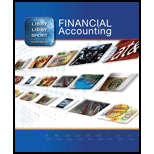
1.
Compute the return on assets for the most recent year and to state the company that provided the highest
1.
Explanation of Solution
Return on assets: Return on assets is the financial ratio which determines the amount of net income earned by the business with the use of total assets owned by it. It indicates the magnitude of the company’s earnings with relative to its total assets.
The return on asset ratios of Incorporation AE and Incorporation UO for the most recent years is given below:
| Particulars | Incorporation AE | Incorporation UO |
Table (1)
Working Note:
Determine the average total assets of Incorporation AE.
Determine the average total assets of Incorporation UO.
Comparing the return on assets of the two companies from Table (1), Incorporation UO is having higher return on assets ratio of 0.1131% during the current year.
2.
Ascertain the cause(s) of any differences using ROA profit driver analysis and to explain the ownership versus the rental of property, plant, and equipment affect the total asset turnover ratio.
2.
Explanation of Solution
Return on assets (ROA) profit driver analysis: Return on assets (ROA) profit driver analysis categorizes the ROA into two factors that are Net profit margin and Total asset turnover, which helps the management to improvise ROA. The ROA profit driver analysis can be computed by using the following formula:
Net profit margin ratio: Net profit is the financial ratio that shows the relationship between the net profit and net sales (Operating revenue). Net profit is the difference between total operating revenue and total operating expenses. It can be calculated by dividing net profit and operating revenue. Net profit margin ratio can be calculated by using the following formula:
Total asset turnover ratio: Total asset turnover ratio shows the relationship between the net income and total assets. Total asset turnover ratio is used to determine how much the sales revenue is generated with the efficient utilization of total assets. Total asset turnover ratio can be calculated by using the following formula:
Prepare a table showing the changes in ROA using ROA profit driver analysis as given below:
Determine the return on asset ratio for the current year and prior year.
| ROA Analysis | Incorporation AE | Incorporation UO |
|
| ||
| Return on Assets | 0.079 | 0.1131 |
Table (2)
Comparing the return on assets of the two companies from Table (2) Incorporation UO has a higher ROA than Incorporation AE because it has a greater profit margin of 0.079 that compensates for having lower total asset turnover ratio of 1.65.
Title of property, plant, and equipment would decrease the total asset turnover ratio comparative to rentals. The possessed assets would be included while determining the “average total assets” whereas the rented assets would not be included and hence, the asset turnover would be lesser at the same level of sales volume.
3.
Compare the ROA profit driver analysis for Incorporation AE and Incorporation UO to the ROA profit driver analysis for their industry and to comment whether Incorporation AE and Incorporation UO outperform or underperform the industry
3.
Explanation of Solution
Return on assets (ROA) profit driver analysis: Return on assets (ROA) profit driver analysis categorizes the ROA into two factors that are Net profit margin and Total asset turnover, which helps the management to improvise ROA. The ROA profit driver analysis can be computed by using the following formula:
Prepare a table showing the comparison of industry average ratio with Incorporation AE and Incorporation UO:
| ROA Analysis | Industry Average | Incorporation AE | Incorporation UO |
| Net Profit Margin (Refer Table (2)) | 0.054 (Given) | 0.048 | 0.075 |
| Total Asset Turnover (Refer Table (2)) | 1.75 (Given) | 1.65 | 1.509 |
| Return on Assets (Refer Table (1)) | 0.091 | 0.079 | 0.1131 |
Table (3)
From Table (3), Incorporation UO has a greater ROA and Incorporation AE has a lesser ROA than the industry average. This is due to the greater net profit margins maintained by Incorporation UO. This is expected, given that the Incorporation UO competes by product differentiation rather than price differentiation.
Incorporation AE and Incorporation UO are having lower total asset turnover ratios compared with the industry average.
Want to see more full solutions like this?
Chapter 5 Solutions
Financial Accounting, 8th Edition
- I don't need ai answer general accounting questionarrow_forwardI need help with this solution and general accounting questionarrow_forwardA company has the following data: Sales: $600,000 Cost of Goods Sold: $350,000 Operating Expenses: $100,000 Interest Expense: $20,000 Tax Expense: $30,000 What is the net income? . explainarrow_forward
- Can you demonstrate the accurate method for solving this financial accounting question?arrow_forwardA company has the following data: Sales: $600,000 Cost of Goods Sold: $350,000 Operating Expenses: $100,000 Interest Expense: $20,000 Tax Expense: $30,000 What is the net income?arrow_forwardCan you help me solve this general accounting problem using the correct accounting process?arrow_forward
- Jasper Company's output for the current period was assigned a $225,000 standard direct materials cost. The direct materials variances included a $15,500 favorable price variance and a $3,200 favorable quantity variance. What is the actual total direct materials cost for the current period?arrow_forwardWhat are the budgeted cash disbursement for June ?arrow_forwardPlease provide the correct answer to this general accounting problem using accurate calculations.arrow_forward

 AccountingAccountingISBN:9781337272094Author:WARREN, Carl S., Reeve, James M., Duchac, Jonathan E.Publisher:Cengage Learning,
AccountingAccountingISBN:9781337272094Author:WARREN, Carl S., Reeve, James M., Duchac, Jonathan E.Publisher:Cengage Learning, Accounting Information SystemsAccountingISBN:9781337619202Author:Hall, James A.Publisher:Cengage Learning,
Accounting Information SystemsAccountingISBN:9781337619202Author:Hall, James A.Publisher:Cengage Learning, Horngren's Cost Accounting: A Managerial Emphasis...AccountingISBN:9780134475585Author:Srikant M. Datar, Madhav V. RajanPublisher:PEARSON
Horngren's Cost Accounting: A Managerial Emphasis...AccountingISBN:9780134475585Author:Srikant M. Datar, Madhav V. RajanPublisher:PEARSON Intermediate AccountingAccountingISBN:9781259722660Author:J. David Spiceland, Mark W. Nelson, Wayne M ThomasPublisher:McGraw-Hill Education
Intermediate AccountingAccountingISBN:9781259722660Author:J. David Spiceland, Mark W. Nelson, Wayne M ThomasPublisher:McGraw-Hill Education Financial and Managerial AccountingAccountingISBN:9781259726705Author:John J Wild, Ken W. Shaw, Barbara Chiappetta Fundamental Accounting PrinciplesPublisher:McGraw-Hill Education
Financial and Managerial AccountingAccountingISBN:9781259726705Author:John J Wild, Ken W. Shaw, Barbara Chiappetta Fundamental Accounting PrinciplesPublisher:McGraw-Hill Education





